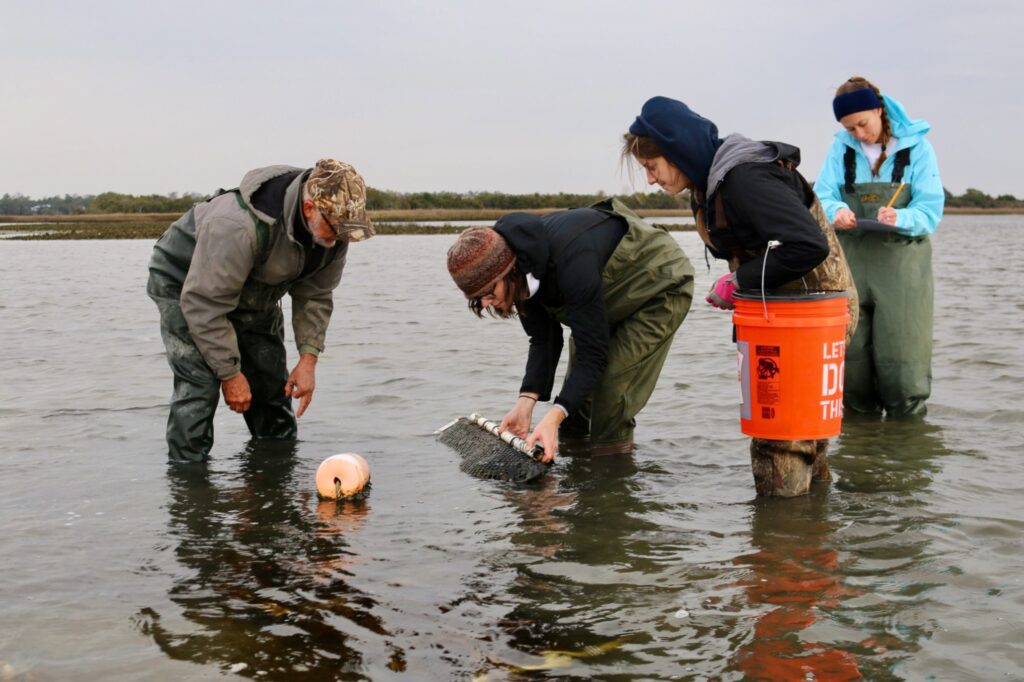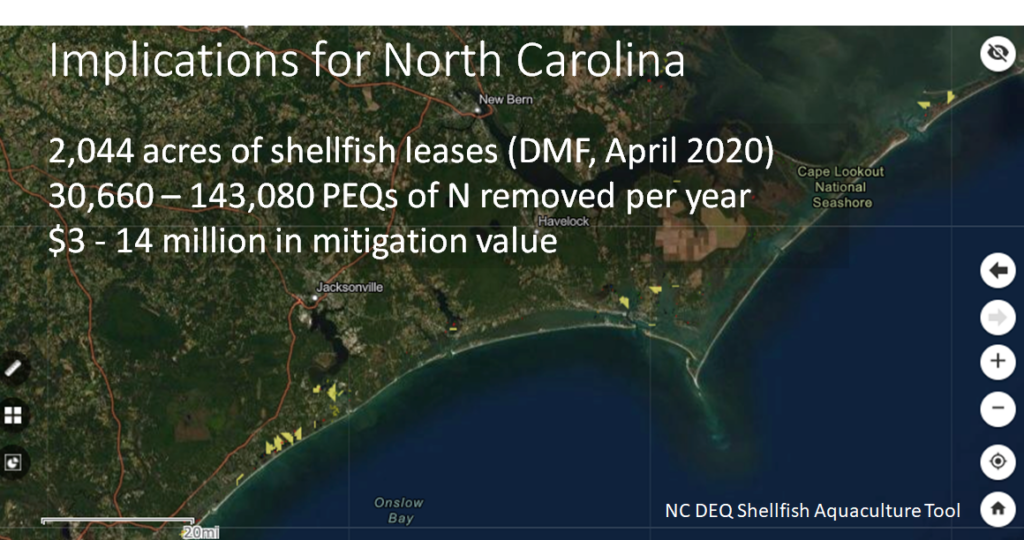
North Carolina’s shellfish aquaculture industry has been small but stable for over 30 years. Increased interest in shellfish aquaculture has placed pressure on resource managers making siting decisions, including whether to site aquaculture within the North Carolina National Estuarine Research Reserve (NCNERR), and what impact shellfish aquaculture will have on nearby wild oyster populations.
NCCOS partnered with NCNERR and University of NC Wilmington on a three-year NERR Science Collaborative project designed to evaluate the environmental impacts and ecosystem services of oyster aquaculture in NCNERR and other NC estuaries. To help inform the planning and permitting of oyster farms, this project assessed ecosystem services by measuring impacts of newly-established shellfish aquaculture farms among intertidal and subtidal grow-out sites.
Researchers measured environmental and ecological parameters and metrics of oyster health before and after the establishment of oyster farms. Project findings showed that few environmental changes were observed due to shellfish aquaculture:
- There was no difference between water and sediment quality within and adjacent to the NERRs.
- Wild Oysters: Higher density and larger oysters on reefs nearer to farms
- Oyster aquaculture-related nutrient removal was equivalent to removal seen in other studies in other US regions.
- When scaled up to include nutrient removal by all existing NC aquaculture leases, the estimated economic value represents $3 – $14 million in mitigation value.
Research results combined with stakeholder inputs were used to develop a model-based shellfish aquaculture decision support tool for NC that is transferable to other waterbodies that support shellfish aquaculture. Project outcomes include stronger relationships between resource managers and the industry to assure successful continuing development and buildout of the NC shellfish aquaculture industry. As pressure to expand shellfish aquaculture in the US increases, these project results will be helpful to the NERRs and to states in their determination of appropriate and successful aquaculture siting.
Project results were described in an October 20, 2020 webinar that can be accessed here. Learn more about the project here.

